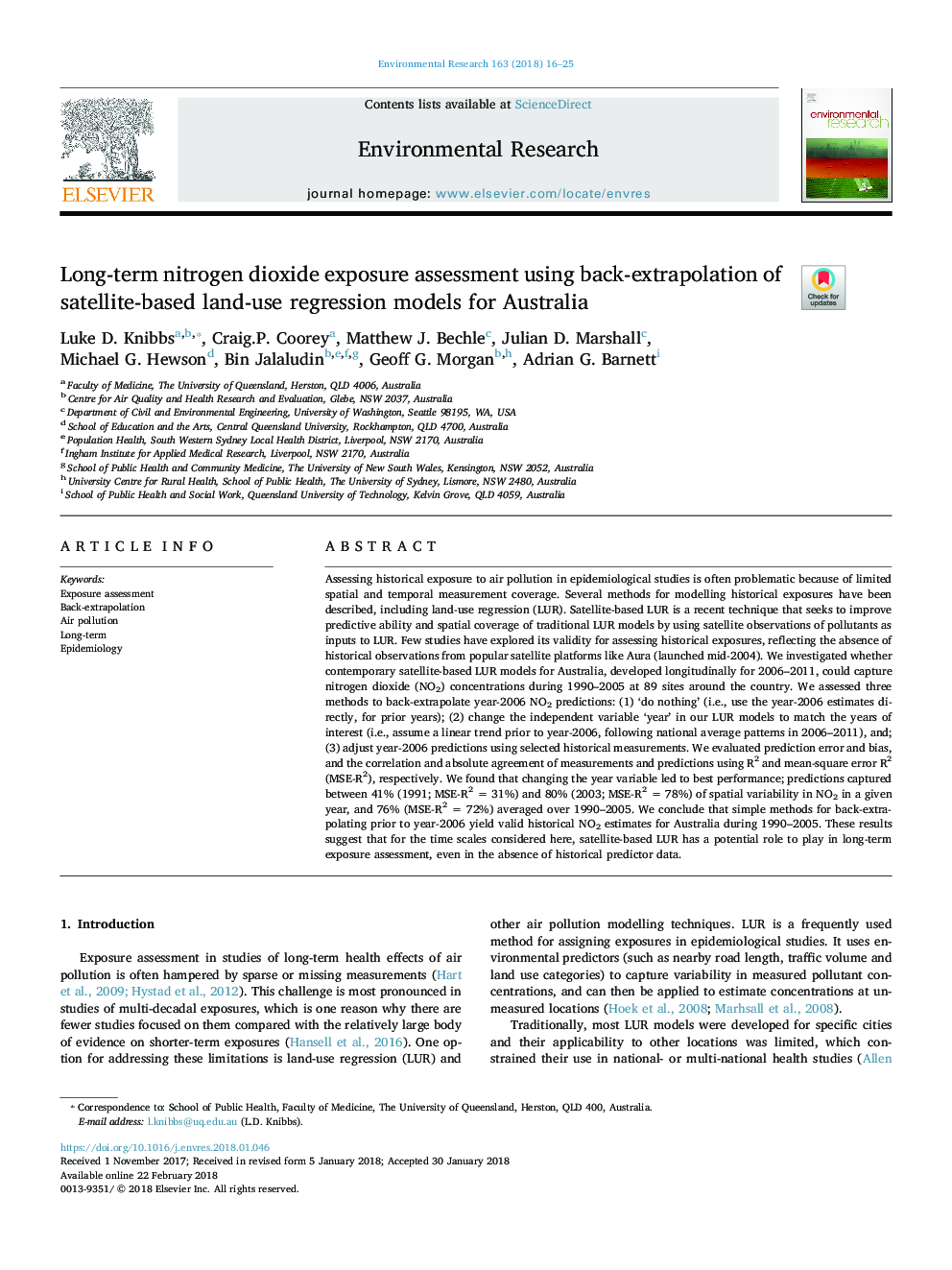| کد مقاله | کد نشریه | سال انتشار | مقاله انگلیسی | نسخه تمام متن |
|---|---|---|---|---|
| 8869070 | 1622540 | 2018 | 10 صفحه PDF | دانلود رایگان |
عنوان انگلیسی مقاله ISI
Long-term nitrogen dioxide exposure assessment using back-extrapolation of satellite-based land-use regression models for Australia
ترجمه فارسی عنوان
ارزیابی قرار گرفتن در معرض دی اکسید نیتروژن درازمدت با استفاده از عقب-استخراج مدل های رگرسیون زمین برای استفاده از ماهواره برای استرالیا
دانلود مقاله + سفارش ترجمه
دانلود مقاله ISI انگلیسی
رایگان برای ایرانیان
کلمات کلیدی
ارزیابی قرار گرفتن در معرض، بازگشت به عقب، آلودگی هوا، طولانی مدت، همهگیرشناسی،
موضوعات مرتبط
علوم زیستی و بیوفناوری
علوم محیط زیست
بهداشت، سم شناسی و جهش زایی
چکیده انگلیسی
Assessing historical exposure to air pollution in epidemiological studies is often problematic because of limited spatial and temporal measurement coverage. Several methods for modelling historical exposures have been described, including land-use regression (LUR). Satellite-based LUR is a recent technique that seeks to improve predictive ability and spatial coverage of traditional LUR models by using satellite observations of pollutants as inputs to LUR. Few studies have explored its validity for assessing historical exposures, reflecting the absence of historical observations from popular satellite platforms like Aura (launched mid-2004). We investigated whether contemporary satellite-based LUR models for Australia, developed longitudinally for 2006-2011, could capture nitrogen dioxide (NO2) concentrations during 1990-2005 at 89 sites around the country. We assessed three methods to back-extrapolate year-2006 NO2 predictions: (1) 'do nothing' (i.e., use the year-2006 estimates directly, for prior years); (2) change the independent variable 'year' in our LUR models to match the years of interest (i.e., assume a linear trend prior to year-2006, following national average patterns in 2006-2011), and; (3) adjust year-2006 predictions using selected historical measurements. We evaluated prediction error and bias, and the correlation and absolute agreement of measurements and predictions using R2 and mean-square error R2 (MSE-R2), respectively. We found that changing the year variable led to best performance; predictions captured between 41% (1991; MSE-R2 = 31%) and 80% (2003; MSE-R2 = 78%) of spatial variability in NO2 in a given year, and 76% (MSE-R2 = 72%) averaged over 1990-2005. We conclude that simple methods for back-extrapolating prior to year-2006 yield valid historical NO2 estimates for Australia during 1990-2005. These results suggest that for the time scales considered here, satellite-based LUR has a potential role to play in long-term exposure assessment, even in the absence of historical predictor data.
ناشر
Database: Elsevier - ScienceDirect (ساینس دایرکت)
Journal: Environmental Research - Volume 163, May 2018, Pages 16-25
Journal: Environmental Research - Volume 163, May 2018, Pages 16-25
نویسندگان
Luke D. Knibbs, Craig.P. Coorey, Matthew J. Bechle, Julian D. Marshall, Michael G. Hewson, Bin Jalaludin, Geoff G. Morgan, Adrian G. Barnett,
